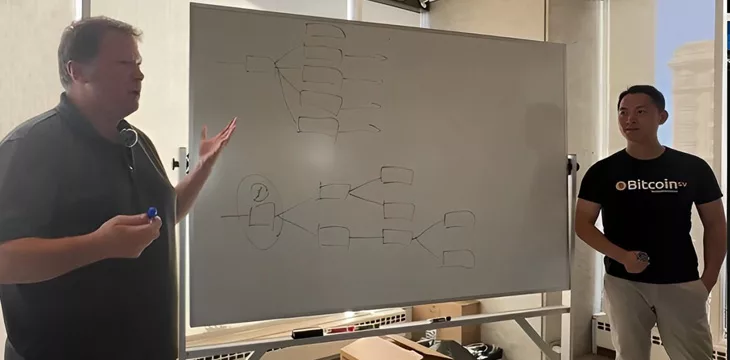|
Getting your Trinity Audio player ready...
|
If you’ve followed the space over the past year, you’ve probably heard the word “Ordinals” a lot. But what are Ordinals, and how can you interact with them using sCrypt?
In this session of the recent sCrypt Hackathon 2024 kickoff event, 1Sat Ordinals developer
David Case explains how inscribing single satoshi units with NFT data has captured everyone’s attention.
The sCrypt Hackathon is an online competition for developers running from March 25 to April 25, 2024. It’s designed to help find Bitcoin’s true “killer app” and to show how sCrypt makes it easy for new developers to enter the blockchain world and turn their ideas into reality.
The full morning session of Day 1 is available at this link, and you can catch the entire two-day series of sCrypt Hackathon 2024 presentations on the CoinGeek YouTube channel. The presentations present the blockchain’s basic features and then go into more technical detail about how sCrypt’s TypeScript-based environment makes it easier for developers to turn their visions into working products.
Ordinals and 1Sat Ordinals: same thing but different
Case warns his presentation “will be a fairly technical talk” with “no fancy graphics.” That said, the concept of Ordinals themselves is pretty simple. It’s a globally unique identifier, like a serial number, for a single satoshi. There are rules for tracking that unique satoshi across many transactions. However, keeping track of all these unique units and their history can become computationally expensive.
Ordinals were developed initially for the BTC blockchain. However, that network’s limited capacity and high fees make turning single satoshi units into NFTs more cumbersome (and expensive) than it needs to be. 1Sat Ordinals is the implementation designed for the BSV blockchain, which leverages that network’s advantages in speed, capacity, and cost. On the BSV blockchain, Ordinals are much lighter-weight to index.
Ordinals and 1Sat Ordinals are conceptually the same, and the end user wouldn’t notice any difference. Case explains how things work differently on the back end in this presentation.
Satoshis (also called “sats”) are Bitcoin’s smallest unit. There are 21 million Bitcoins, and every Bitcoin is divisible into 100,000,000 Satoshis. While there are still a few million Bitcoins yet to be mined, the total number of Satoshi units available will be 2,100,000,000,000,000—or 2.1 quadrillion.
‘Like carving a picture into the wall of a cave’
Marking a Satoshi as an Ordinal is known as “inscribing,” and these inscriptions “are files that live on the blockchain,” Case says. Tracking this inscription across thousands of transactions is more complex than simply mapping identifiers to inputs and outputs. 1Sat Ordinals assigns an “origin” to each token when it’s created, and this is referenced every time its unique satoshi changes hands.
The extra data that turns a satoshi into a unique token is contained in an “inscription envelope” that the 1Sat Ordinals protocol will execute if it sees one present. This can include sCrypt contract data that handles ownership and transfer details more efficiently. Case presents some examples of code to perform different token-handling processes, which he describes as working similarly to the worldwide web searching for unique files.
He also details ways in which a “Generative NFT Contract” can create and deploy a collector token series for a website automatically, randomly combining different attribute “layers” from a master resource in a way that never produces the same image twice. Additionally, there’s the “Lock-to-Mint” process that can deploy an entire set of tokens in the same transaction where those tokens are owned by an sCrypt contract. The contract remembers how many tokens it contains and their lock/unlock status—which can even be set before a unique token exists (buyers can “lock” Bitcoin payments for a specific time in advance, receiving the NFTs later).
If this sounds interesting, check out the sCrypt Hackathon presentations for developers or take a look at sCrypt’s other work. Anyone can register to participate in the Hackathon before March 25, 2024, at its website here. sCrypt’s website is open any time after that for people to find out more.
Watch: sCrypt applications are proving how powerful Bitcoin is

 12-29-2025
12-29-2025 




